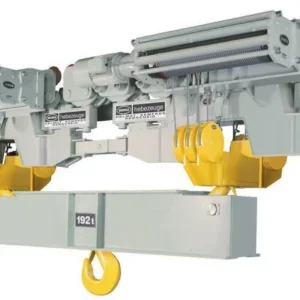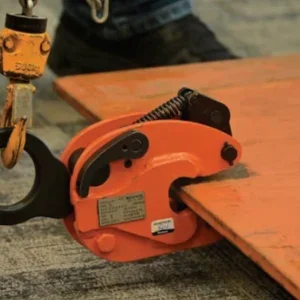
Positioning the crane hook over the centre of gravity is taking a big step towards making the lift level, stable and safe. However, even if you are connecting to the lifting hardware directly above the load’s centre, it can be unstable regardless. In fact, we are always cautious about stating what is safe or unsafe when using centre of gravity as the only means by which to measure safety.
Before getting to the centre of gravity, it is important to find out the weight of the load, regularly shaped or otherwise. We can find this out by using a variety of methods, including from drawings, technical specifications, calculations or estimations.
Regardless of weight, rigging is rarely as simple as lifting a symmetrical load, with a dead centre of gravity, with machined pick points. I’d say that at least half of the applications we deal with have an off-centre of gravity. Think about that in terms of the volume of lifts that are taking place globally at any one time – that’s millions of off-centre lifts.
That doesn’t mean that these lifts are unsafe, but it does mean that there is greater risk associated with them, as we’ll explore.
PASSING THE TEST
If you look at a load to be lifted, it may be assumed that the centre of gravity, or its balance point, will be directly in the middle. However, we can’t work with visual assessments alone because that gives us no idea of the contents of a container or crate, for example.
When you have an object that is, visibly or not, weighted more to one side than the other, the centre of gravity, or balance point, is not going to be exactly in the middle. If you were to lift in the same manner as you lifted a perfectly centred load, the load would tilt. Also, the load could slip out of the rigging as it is being lifted from a resting position. That could cause property damage, or even injury and death to workers by making an unknown and uncontrolled movement.
These days, it is not uncommon for load cells to be utilised, especially with heavier loads, to weigh a load at each corner to decipher centre of gravity. Special consideration must be given to a lift when the centre of gravity is above the connection point – say, when you’re lifting a box from pick points at is base versus its top sides or corners.
Finding that centre of gravity even without state-of-the-art technology is not really difficult. Test lifts can be carried out to learn where the rigging gear should be positioned to create a level lift. In the early moments of a test, the load should be raised only a couple of inches. Initially, only one end should come off the floor while the other stays on the ground. That helps to identify which end of the load is the heaviest and allows for adjustments to the rigging to balance and centre it. This process shouldn’t be rushed; numerous test lifts may be required until the centre of gravity has been proved.
ADJUSTABLE RIGGING GEAR
There are a variety of adjustable rigging and below-the-hook lifting devices and methods that can be used to lift off-centre loads, ranging from simply changing the length of a sling leg to an automated control system on a lifter that senses out of level conditions. One of the most common solutions is a spreader beam. With an equal load on each end, it stands to reason the beam hangs level. Typically, if a lift is within 5°, that’s reasonable, but some applications may have to be more precise.
With certain Caldwell lifting beams, you are able to adjust and re-attach the rigging hardware to the crane hook closer to the heavier end of the load. Numerous manufacturers offer lifting beams that have adjustable plate bails; the bail is where the crane hook is connected. With an attached pin that can simply be pulled, the bail can be moved to multiple positions to account for the load’s gravitational centre. You may also be able to adjust the rigging hardware that connects the beam to the load itself to get the hook closer to the centre of gravity.
Another common method is to utilise slings. When using a two-leg sling to lift a solid box, if both legs are at the same angle to the vertical, then the load will be shared equally and the force in each leg will be the same. Caldwell’s Adjust-A-Leg allows the crane hook to be over the load’s centre of gravity even in unbalanced or non-symmetrical two-point lifts. It quickly adjusts to centre of gravity but can be locked into place for constant lifts and used in conjunction with spreader beams.
When lifting irregular loads, the shape and the location of the possible lifting points dictates the geometry of the sling arrangement. An important point to understand is how the load is shared between the components of the slinging system and therefore the forces arising in each. The amount of force will depend upon the angle; the greater the angle to the vertical, the greater the force.






